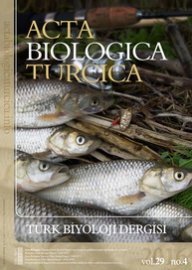Effect of phosphorus and silicon limitation on lipid production of Phaeodactylum tricornutum as a potential source of biodiesel
Abstract
Keywords
Full Text:
PDFReferences
Alipanah L, Winge P, Rohloff J, Najafi J, Brembu T, Bones AM. 2018. Molecular adaptations to phosphorus deprivation and comparison with nitrogen deprivation responses in the diatom Phaeodactylum tricornutum. PLoS One. 13(2): e0193335. https://doi.org/10.1371/journal.pone.0193335
Association of Official Analytical Chemists (AOAC) 1998. 16th Association of Official Analytical Chemists. Arlington Virginia.
Ben-Amotz A, Tornabene TG, Thomas WH. 1984. Chemical profile of selected species of microalgae with emphasis on lipids. J. Phycol. 21(1):72-81.
Bligh EG. Dyer, WJ. 1959. A rapid method for total lipid extraction and purification. Can.J.Biochem.Physiol. 37, 911-917.
Branco-Vieira M, San Martin S, Agurto C, Santos MA, Freitas MA, Caetano NS. 2017. Analyzing Phaeodactylum tricornutum lipid profile for biodiesel production. Energy Procedia. 136, 369-373. https://doi.org/10.1016/j.egypro.2017.10.251
Coombs J, Darley WM, Holm-Hansen O, Volcani BE. 1967. Studies on the biochemistry and fine structure of silica shell formation in diatoms. Chemical composition of Navicula pelliculosa during silicon starvation. Plant Physiol. 42, 1601-6.
Encinas-Arzate JJ, Marquez-Ríos E, López-Elías JA, Torres-Areola W, Huerta-Ocampo, JÁ, Ramírez-Suárez JC. 2020. Effect of the deficiency of nitrate and silicate on the growth and composition of the benthic diatom Navicula incerta. Lat. Am. J. Aquat. Res. 48(2), 280-286. DOI: 10.3856/vol48-issue2-fulltext-2314
Guillard RRL. 1973. Division Rates. In: Stein RJ. (Ed.) Handbook of Phycological Methods, Culture Methods and Growth Measurement. Cambridge Univ. Press, Newyork, 283-311.
Hoekman SK, Broch A, Robbins C, Ceniceros E, Natarajan M. 2012. Review of biodiesel composition, properties, and specifications. Renew. Sust. Energ. Rev. 16(1), 143-169. https://doi.org/10.1016/j.rser.2011.07.143
Ichihara KI, Shibahara A, Yamamoto K, Nakayama T. 1996. An improved method for rapid analysis of the fatty acids of glycerolipids. Lipids. 31(5), 535-539. https://doi.org/10.1007/BF02522986
Jiang Y, Laverty KS, Brown J, Brown L, Chagoya J, Burow M, Quigg A. 2015. Effect of silicate limitation on growth, cell composition, and lipid production of three native diatoms to Southwest Texas desert. J. Appl. Phycol. 27(4), 1433-1442. https://doi.org/10.1007/s10811-014-0463-7
Kaur S, Sarkar M, Srivastava RB, Gogoi HK, Kalita MC. 2012. Fatty acid profiling and molecular characterization of some freshwater microalgae from India with potential for biodiesel production. N. Biotechnol. 29(3), 332-344. https://doi.org/10.1016/j.nbt.2011.10.009
Knothe G, Dunn RO. 2009. A comprehensive evaluation of the melting points of fatty acids and esters determined by differential scanning calorimetry. J Am Oil Chem Soc. 86(9), 843-856. https://doi.org/10.1007/s11746-009-1423-2
Kocataş A. 1993. Oseanoloji: deniz bilimlerine giriş. Ege Üniversitesi Su Ürünleri Fakültesi.
Kulkarni S, Nikolov Z. 2018. Process for selective extraction of pigments and functional proteins from Chlorella vulgaris. Algal Res. 35, 185-193. https://doi.org/10.1016/j.algal.2018.08.024
Lari Z, Moradi N, Ahmadzadeh H, Abrishamchi P, Moheimani N, Murry MA. 2016. Bioprocess engineering of microalgae to optimize lipid production through nutrient management. J. Appl. Phycol. 28, 3235-3250. https://doi.org/10.1007/s10811-016-0884-6
Lu L, Yang G, Zhu B, Pan K. 2017. A comparative study on three quantitating methods of microalgal biomass. Indian J. Mar. Sci. 46(11), 2265-2272.
Maltsev Y, Maltseva I, Maltseva S, Kociolek JP, Kulikovskiy M. 2021. A new species of freshwater algae Nephrochlamys yushanlensis sp. nov.(Selenastraceae, Sphaeropleales) and its lipid accumulation during nitrogen and phosphorus starvation. J. Phycol. 57(2), 606-618. https://doi.org/10.1111/jpy.13116
Plaxton WC, Tran HT. 2011. Metabolic adaptations of phosphate-starved plants. Plant Physiol. 156, 1006–1015. https://doi.org/10.1104/pp.111.175281
Reitan KI, Rainuzzo JR, Olsen Y. 1994. Effect of nutrient limitation on fatty acid and lipid content of marine microalgae. J. Phycol, 30(6), 972-979. https://doi.org/10.1111/j.0022-3646.1994.00972.x
Rodolfi L, Biondi N, Guccione A, Bassi N, D'Ottavio M, Arganaraz G, Tredici MR. Oil and eicosapentaenoic acid production by the diatom Phaeodactylum tricornutum cultivated outdoors in Green Wall Panel (GWP®) reactors. Biotechnol Bioeng. 14(10), 2204-2210. https://doi.org/10.1002/bit.26353
Roopnarain A, Gray VM, Sym SD. 2014. Phosphorus limitation and starvation effects on cell growth and lipid accumulation in Isochrysis galbana U4 for biodiesel production. Bioresour Technol. 156, 408-411. https://doi.org/10.1016/j.biortech.2014.01.092
Rousch, J. M., Bingham, S. E., & Sommerfeld, M. R., 2003. Changes in fatty acid profiles of thermo-intolerant and thermo-tolerant marine diatoms during temperature stress. J. Exp. Mar. Biol. Ecol. 295(2), 145-156. https://doi.org/10.1016/S0022-0981(03)00293-4
Schenk PM, Thomas-Hall SR, Stephens E, Marx UC, Mussgnug JH, Posten C, Hankamer B. 2008. Second Generation Biofuels: High-Efficiency Microalgae for Biodiesel Production. Bioenerg. Res. 1, 20–43. https://doi.org/10.1007/s12155-008-9008-8
Siron R, Giusti G, Berland B. 1989. Changes in the fatty acid composition of Phaeodactylum tricornutum and Dunaliella tertiolecta during growth and under phosphorus deficiency. Mar. Ecol. Prog. Ser. 95-100.
Spilling K, Seppälä J, Schwenk D, Rischer H, Tamminen T. 2021. Variation in the fatty acid profiles of two cold water diatoms grown under different temperature, light, and nutrient regimes. J. Appl. Phycol. 33, 1447-1455. https://doi.org/10.1007/s10811-021-02380-9
Takagi M, Karseno YT. 2006. Effect of salt concentration on intracellular accumulation of lipids and triacylglyceride in marine microalgae Dunaliella cells. J. Biosci. Bioeng. 101(3), 223-226. https://doi.org/10.1263/jbb.101.223
Vonshak A. 1988. Porphyridium. In: Borowitzka MA, Borowitzka LJ (eds) Micro-algal biotechnology. Cambridge University Press, Cambridge, 122-134.
Yang ZK, Zheng JW, Niu YF, Yang WD, Liu JS, Li HY. 2014. Systems‐level analysis of the metabolic responses of the diatom Phaeodactylum tricornutum to phosphorus stress. Environ. Microbiol. 16, 1793–1807. https://doi.org/10.1111/1462-2920.12411
Yi Z, Xu M, Di X, Brynjolfsson S, Fu W. 2017. Exploring valuable lipids in diatoms. Front. Mar. Sci. 4, 17. https://doi.org/10.3389/fmars.2017.00017
Refbacks
- There are currently no refbacks.

